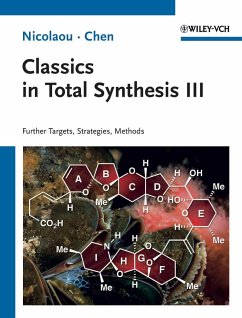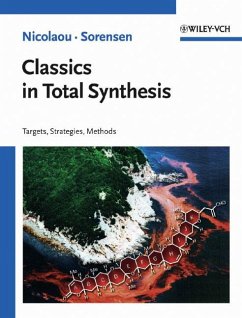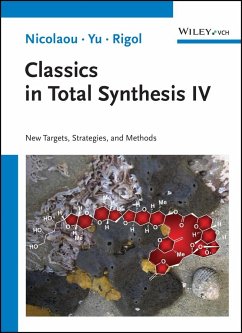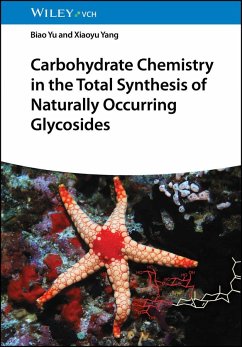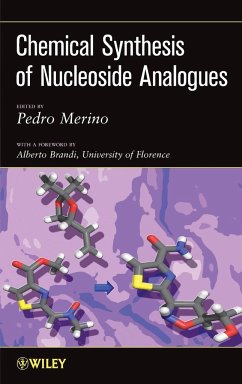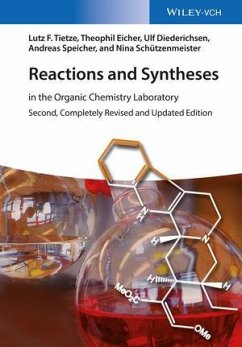Nowadays, books that concentrate on the area of organic synthesis are numerous enough to fill whole inventories of libraries. But of that multitude, only a few books have been as outstanding in recent years as the series Classics in Total Synthesis, written by K. C. Nicolaou with various co-authors. This series can therefore already be justifiably called a classic in itself. Likewise, the third volume of this series, published by Wiley-VCH in February 2011, will surely continue the success of the previous volumes, and will certainly be a must-have in the libraries of synthetically orientated groups.
The concept of the preceding volumes has been closely retained. In 26 chapters, including an introductory chapter, syntheses of more
than 40 natural products or natural product core structures are discussed in detail. The syntheses, together with historical excursions, have been taken from literature of the years 2003 to 2010. Each chapter begins with background information about the discovery, structure elucidation, and biological significance of the target molecule(s). To aid the reader_s orientation, key concepts of the total synthesis described are provided at the beginning of each chapter. After describing retrosyntheses that have been achieved, and any preliminary synthetic work, the chapter gives a very detailed description of the synthesis of the target structure, including almost all the individual steps. All literature references are clearly identified by chapter endnotes, thus allowing rapid access to the primary sources. The chapter ends with a short summary and a well-chosen, detailed, and extensive list of references. This alone is one of the great strengths of the book, and provides every synthetic chemist with an excellent pool for the solution of his or her own synthetic problems. Also particularly valuable for the reader are the short reviews on specific topics, which have the scope and style of review articles. Thus, one finds surveys on current topics of interest such as organocatalysis (Chapter 7: littoralisone, oseltamivir, hirsutellone B) and C_H activation (Chapter 2: tetrodotoxin) next to overviews of more classical themes such as Schenck ene reactions with singlet oxygen (Chapter 12: tetracycline), photochemically induced [2+2] cycloadditions (Chapter 18: biyouyanagin A), [2+2+2] cycloadditions, Diels-Alder reactions with o-quinones (Chapter 22: sporolid B), and Kagan-Molander SmI2 couplings (Chapter 24: vannusal B). The review of asymmetric halogenation reactions (Chapter 21: chlorosulfolipid cytotoxin) is particularly well-written, as it clearly demonstrates, to the young scientist as well as to the post- or pre-graduate student, that there are still enough chemical transformations that have not yet been sufficiently studied, and therefore leave room for personal creativity and ambition.
Novelties of this third volume compared to the previous ones are mainly concerned with the detailed contents. The depth of mechanistic discussions has been greatly increased. The introductions to the chapters often feature insights into the biosynthesis of the natural product concerned (e.g., Chapter 10: stephacidin). Some small sections describe problems associated with structure elucidation, which then led to revision of the supposed structure in the context of the total synthesis (e.g., in Chapter 4: azaspiracid-1). The very instructive concept of discussing and comparing several different syntheses of a target structure in a parallel fashion, which was introduced in the second volume of this series, has now been further developed in a clever way. Sometimes it would also have been useful for the synthetic chemist reader to be given an explanation of why a specific unusual reagent was chosen at a certain stage during the planning or carrying out of a synthesis, and why an apparently more convenient and conventional procedure was avoided. Such explanations, and possibly also descriptions of unsuccessful attempted routes, could give the reader an even more detailed insight into problems of reactivity or selectivity of a specific reagent or substrate.
The layout of this book has only been slightly changed compared with previous volumes. One innovation is the introduction of a colored title page at the beginning of each chapter, presenting an attractive graphical illustration of the target structure, together with its natural source and a picture of the leader of the group that worked on the total synthesis. However, the opportunity to similarly illustrate other parts of the chapter has not been taken; especially in the introduction, figures or graphics in color might have improved the accessibility of the contents. The question of whether it would be an advantage to also introduce color into the synthetic schemes depends on the reader_s personal taste as well as the costs of the book. On the other hand, the great success of this series does support a continuation of the style in its present form.
As the selection of synthetic target molecules for this book is exclusively taken from the more recent literature, in contrast to the first volume of the series, it remains to be seen whether the syntheses described will eventually become true classics. This book will certainly contribute its share to ensuring that these syntheses will be used as outstanding models for teaching and research purposes, even 20 or more years from now. One could also consider an even broader selection of target molecules and structures, which might be less close to the main author_s field of work and experience (at least 10 out of 26 chapters deal with the author_s syntheses). Indisputably, K. C. Nicolaou has made outstanding contributions in his research field. But who would not, for this very reason, like to see discussions of other scientists_ syntheses by the master himself?
A particularly extensive account is given in Chapter 3, which describes an impressive 60 g total synthesis of discodermolide by Novartis. This clearly demonstrates the increasing scientific, but also industrial, importance of complex syntheses of natural products. The present volume - and hopefully future books of this series - offer an exciting and outstanding overview of the subject of natural products total syntheses in its complexity and variety. Classics in Total Synthesis III will surely itself become a classic in the literature on the state of the art of contemporary organic synthetic chemistry.
Dirk Menche, Sebastian Essig
Organisch-Chemisches Institut
Ruprecht-Karls-Universität Heidelberg (Germany)
Angew. Chem. Int. Ed. 2011, 50, 5995 - 5996






